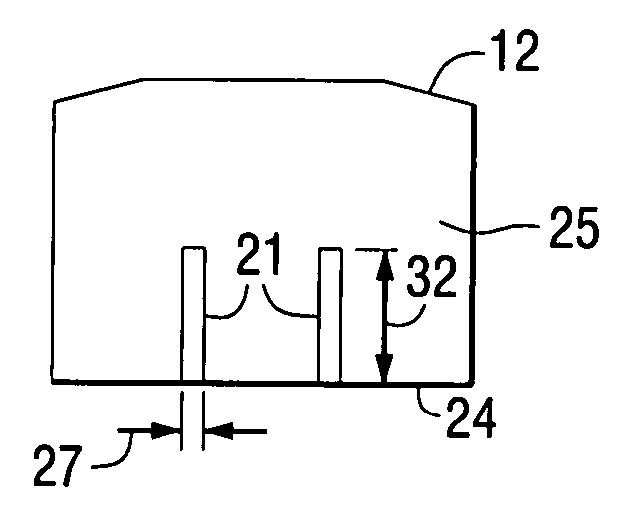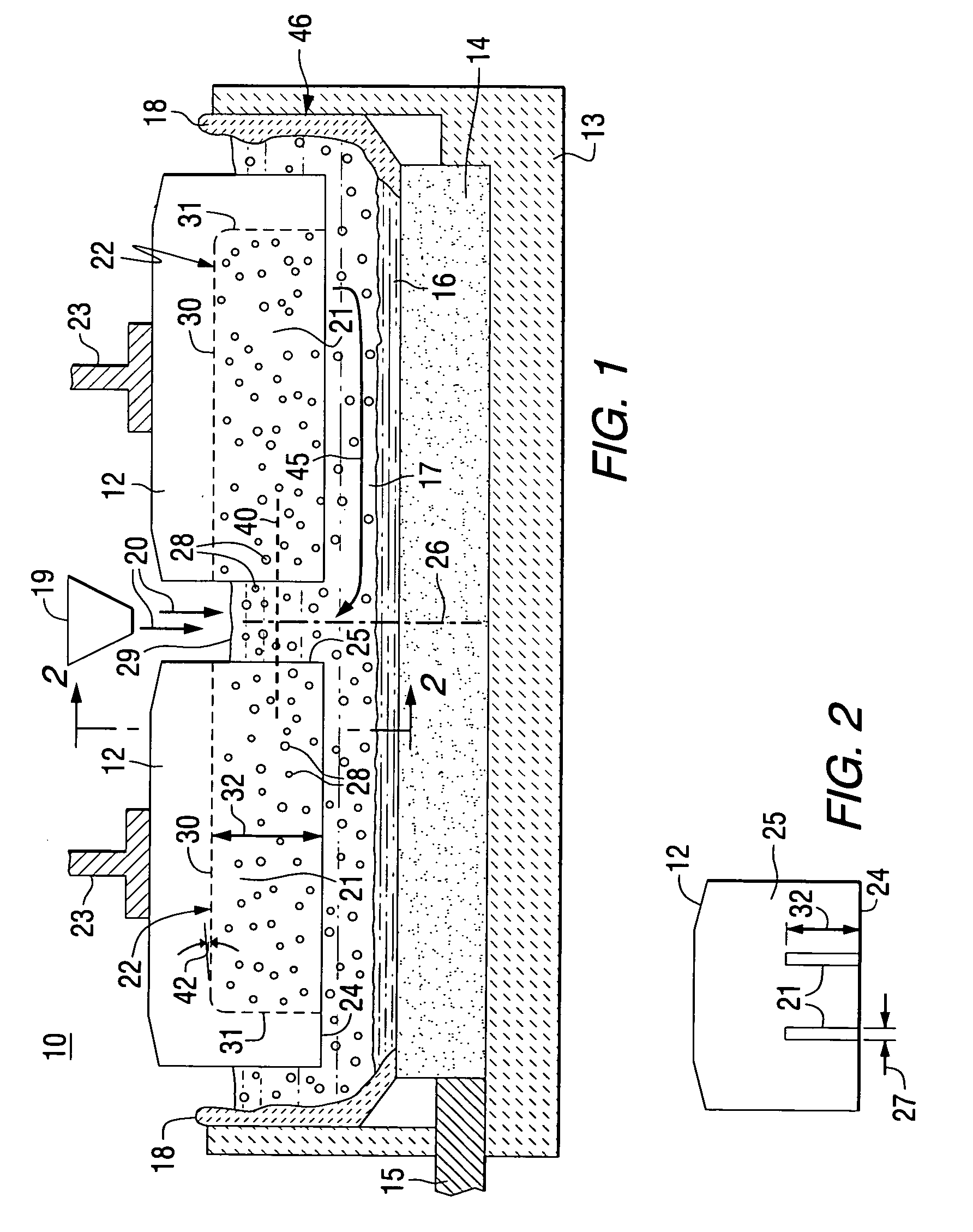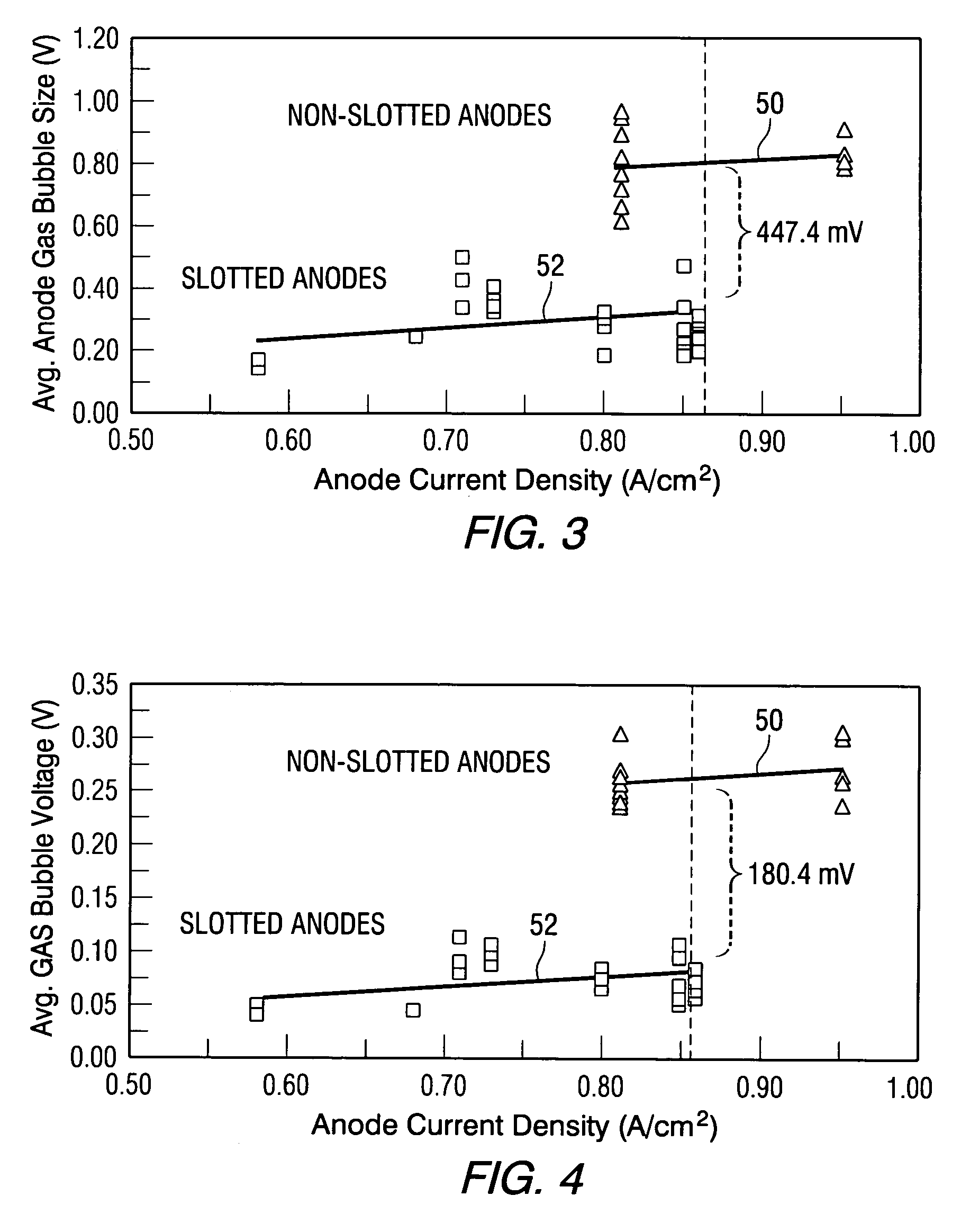Closed end slotted carbon anodes for aluminum electrolysis cells
a technology of aluminum electrolysis cell and closed-end slotted carbon anodes, which is applied in the direction of chemistry apparatus and processes, separation processes, and dispersed particle separation, can solve the problems of increasing “pot” voltage and increasing “pot” noise, and achieves the effects of fast movement of gas bubbles, slow dissolution, and increased efficiencies
- Summary
- Abstract
- Description
- Claims
- Application Information
AI Technical Summary
Benefits of technology
Problems solved by technology
Method used
Image
Examples
example
[0021]Experimental carbon anodes were with two 12 mm wide slots, each slot having a slot height from 45% to 80% of the anode thickness, with a flat roof portion, and a closed end. The front profile was similar to FIG. 2, where the slots were located near and on opposite sides of center, rather than at the near the sides.
[0022]From 16 to 32 anodes, two in a row, were placed in a pilot aluminum extrolysis cell, contacting molten cryloyte at about 950° C. and operated with the slotted side surface facing the center of the cell, as shown in FIG. 1 with a pot voltage of about 402 volts to 4.7 volts. The use of the dual end closed slots generated substantial upward velocity of the various sized and shaped bubbles and was very helpful in breakup of alumina feed agglomerates and also lowered cell voltage by reducing anode gas bubble voltage.
[0023]The presence of slots substantially reduced the magnitude of the anode voltage oscillation / fluctuation. FIG. 3 summarizes the magnitude of the ano...
PUM
| Property | Measurement | Unit |
|---|---|---|
| slot width | aaaaa | aaaaa |
| upward angle | aaaaa | aaaaa |
| width | aaaaa | aaaaa |
Abstract
Description
Claims
Application Information
 Login to View More
Login to View More - R&D
- Intellectual Property
- Life Sciences
- Materials
- Tech Scout
- Unparalleled Data Quality
- Higher Quality Content
- 60% Fewer Hallucinations
Browse by: Latest US Patents, China's latest patents, Technical Efficacy Thesaurus, Application Domain, Technology Topic, Popular Technical Reports.
© 2025 PatSnap. All rights reserved.Legal|Privacy policy|Modern Slavery Act Transparency Statement|Sitemap|About US| Contact US: help@patsnap.com



